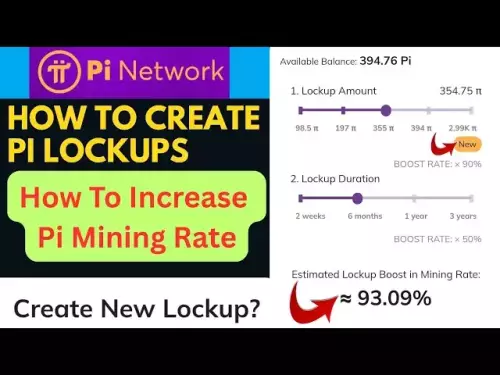-
 bitcoin
bitcoin $114779.865156 USD
2.30% -
 ethereum
ethereum $4226.519789 USD
2.39% -
 tether
tether $1.000545 USD
0.04% -
 xrp
xrp $2.890223 USD
0.92% -
 bnb
bnb $1030.029301 USD
2.95% -
 solana
solana $212.824944 USD
1.69% -
 usd-coin
usd-coin $0.999757 USD
0.01% -
 dogecoin
dogecoin $0.234961 USD
-0.27% -
 tron
tron $0.337174 USD
0.42% -
 cardano
cardano $0.804783 USD
0.09% -
 hyperliquid
hyperliquid $45.748770 USD
-2.85% -
 chainlink
chainlink $21.699170 USD
0.82% -
 ethena-usde
ethena-usde $1.001452 USD
0.08% -
 avalanche
avalanche $30.237800 USD
1.14% -
 stellar
stellar $0.372604 USD
1.52%
Combination of main contract market language and K-line strategy
Understanding main contract market terms like open interest and volume, combined with K-line patterns, can enhance trading decisions in cryptocurrency markets.
Jun 13, 2025 at 03:15 am

Introduction to Main Contract Market Language
Understanding the main contract market language is crucial for any trader looking to navigate the volatile waters of cryptocurrency trading. The main contract, often referred to as the primary futures contract, is the most actively traded futures contract for a particular cryptocurrency. The language of this market involves understanding key terms such as open interest, volume, basis, and funding rates. These terms provide insights into the market's direction and sentiment.
Open interest represents the total number of outstanding futures contracts that have not been settled. A rising open interest indicates new money flowing into the market, which can signal a strong trend. Conversely, declining open interest suggests that the market may be losing momentum. Volume, on the other hand, measures the number of contracts traded during a given period. High volume often accompanies significant price movements, providing clues about potential breakouts or reversals.
Basis is the difference between the spot price of a cryptocurrency and its futures price. A positive basis (contango) indicates that futures are trading at a premium to the spot price, while a negative basis (backwardation) suggests the opposite. Monitoring the basis can help traders identify arbitrage opportunities. Lastly, funding rates in perpetual futures contracts reflect the cost of holding a position. Positive funding rates mean long position holders pay short position holders, and vice versa for negative rates. Understanding these rates can help traders gauge market sentiment and adjust their strategies accordingly.
Understanding K-Line Strategy
K-line charts, also known as candlestick charts, are essential tools for technical analysis in the cryptocurrency market. Each K-line represents price movements within a specific time frame, displaying the open, high, low, and close prices. By analyzing patterns formed by these K-lines, traders can identify potential entry and exit points for their trades.
Bullish and bearish candlestick patterns are the foundation of K-line strategy. A bullish engulfing pattern, for instance, occurs when a small bearish candle is followed by a larger bullish candle that completely engulfs the previous candle's body. This pattern suggests a potential reversal from a downtrend to an uptrend. Conversely, a bearish engulfing pattern signals a potential shift from an uptrend to a downtrend.
Other common patterns include the hammer and shooting star. A hammer forms at the bottom of a downtrend and indicates a potential bullish reversal. It has a small body and a long lower wick, showing that buyers have stepped in to push the price back up. A shooting star, on the other hand, appears at the top of an uptrend and suggests a bearish reversal. It features a small body and a long upper wick, indicating that sellers have entered the market and pushed the price down.
Combining Main Contract Market Language with K-Line Strategy
Integrating the main contract market language with K-line strategy can enhance a trader's ability to make informed decisions. By understanding the dynamics of the main contract market, traders can better interpret the signals provided by K-line patterns.
For example, if a trader observes a bullish engulfing pattern on a K-line chart, they might look at the open interest and volume of the main contract to confirm the strength of the potential uptrend. A rising open interest and high volume accompanying the bullish pattern would provide additional confidence in the trade.
Similarly, if a bearish engulfing pattern appears on the K-line chart, checking the basis and funding rates of the main contract can offer further insights. A negative basis and positive funding rates might indicate that the market is overbought, supporting the bearish signal from the K-line pattern.
Practical Application of Combined Strategies
To illustrate the practical application of combining main contract market language with K-line strategy, let's consider a hypothetical scenario involving Bitcoin (BTC) futures trading.
Suppose a trader notices a hammer pattern on the daily K-line chart of BTC, suggesting a potential bullish reversal. To validate this signal, the trader examines the main contract market data. They observe that open interest has been steadily increasing over the past few days, and volume has spiked on the day the hammer pattern appeared. This suggests that new money is entering the market, supporting the bullish reversal indicated by the K-line pattern.
Next, the trader checks the basis and finds it to be in contango, with futures trading at a premium to the spot price. This could indicate that market participants expect higher prices in the future, further supporting the bullish outlook. Finally, the trader looks at the funding rates, which are positive, meaning long position holders are paying short position holders. This implies that the market sentiment is bullish, aligning with the K-line pattern and other market indicators.
Based on this analysis, the trader decides to enter a long position on BTC futures, expecting the price to rise. They set a stop-loss order below the hammer's low to manage risk and a take-profit order at a level that aligns with their risk-reward ratio.
Risk Management in Combined Strategies
Effective risk management is crucial when applying combined strategies in cryptocurrency trading. Traders must consider various factors to protect their capital and maximize returns.
One key aspect of risk management is position sizing. Traders should allocate only a small percentage of their total capital to any single trade to avoid significant losses. A common rule of thumb is to risk no more than 1-2% of the trading capital on any given trade.
Another important element is stop-loss orders. These orders automatically close a position at a predetermined price level to limit losses. Traders should set stop-loss levels based on technical analysis, such as below key support levels or recent swing lows.
Take-profit orders are also essential for locking in profits. Traders can set these orders at levels that align with their risk-reward ratio, ensuring that potential gains outweigh potential losses. For example, if a trader risks 1% of their capital on a trade, they might aim for a 2% gain, resulting in a 2:1 risk-reward ratio.
Additionally, traders should continuously monitor market conditions and adjust their strategies as needed. This includes staying informed about news events that could impact cryptocurrency prices and regularly reviewing their trading performance to identify areas for improvement.
Frequently Asked Questions
Q: How can I improve my understanding of the main contract market language?A: To improve your understanding of the main contract market language, start by familiarizing yourself with key terms such as open interest, volume, basis, and funding rates. Use reputable financial websites and trading platforms to access real-time data on these metrics. Additionally, consider joining online trading communities or forums where experienced traders share insights and discuss market dynamics.
Q: What are some common mistakes to avoid when using K-line strategy?A: Common mistakes when using K-line strategy include relying solely on one or two patterns without considering the broader market context, entering trades based on incomplete or ambiguous patterns, and neglecting to use stop-loss orders to manage risk. To avoid these pitfalls, always analyze K-line patterns in conjunction with other technical indicators and market data, and ensure that you have a solid risk management plan in place.
Q: How can I practice combining main contract market language with K-line strategy without risking real money?A: One effective way to practice combining these strategies without risking real money is to use a demo trading account provided by many cryptocurrency exchanges and trading platforms. These accounts allow you to trade with virtual funds, enabling you to test your strategies and gain experience in a risk-free environment. Additionally, consider using trading simulators or backtesting software to analyze historical data and refine your approach.
Q: Are there any specific tools or software that can help me analyze both main contract market language and K-line patterns?A: Several tools and software can assist in analyzing both main contract market language and K-line patterns. Popular trading platforms like TradingView offer comprehensive charting tools that allow you to overlay K-line charts with various technical indicators and main contract market data. Additionally, specialized software such as CryptoQuant and Glassnode provide in-depth market data, including open interest, volume, basis, and funding rates, which can be used alongside K-line analysis to inform trading decisions.
Disclaimer:info@kdj.com
The information provided is not trading advice. kdj.com does not assume any responsibility for any investments made based on the information provided in this article. Cryptocurrencies are highly volatile and it is highly recommended that you invest with caution after thorough research!
If you believe that the content used on this website infringes your copyright, please contact us immediately (info@kdj.com) and we will delete it promptly.
- The Spanish Silver Dollar: A Global Currency Through History
- 2025-09-30 14:25:15
- SEC, Crypto, and Regulation: Navigating the Shifting Sands of Digital Finance
- 2025-09-30 14:25:15
- Government Grift, Congress, and ETF Tracking: Is This the Future of Investing?
- 2025-09-30 14:30:01
- CoinShares' Market Metrics: Bitcoin's Calm Amidst Fed Rate Tweaks
- 2025-09-30 14:30:01
- Nonprofit RFI Launches: Bridging Traditional and Decentralized Financial Systems
- 2025-09-30 14:30:01
- Emilio Lozoya's audience: REAL-TEME UPDATES VIA WHASTASP?
- 2025-09-30 14:30:15
Related knowledge

Practical parameter settings for a Bitcoin multi-timeframe moving average system
Sep 18,2025 at 10:54pm
Optimizing Timeframe Combinations for Bitcoin Trading1. Selecting appropriate timeframes is crucial when building a multi-timeframe moving average sys...

How can I filter out false breakouts in Dogecoin high-frequency trading?
Sep 22,2025 at 01:00am
Understanding False Breakouts in Dogecoin Trading1. A false breakout occurs when Dogecoin's price appears to move beyond a defined support or resistan...

Techniques for identifying tops and bottoms in the Bitcoin on-chain NVT model
Sep 20,2025 at 07:54pm
Understanding the NVT Model in Bitcoin Analysis1. The Network Value to Transactions (NVT) ratio is often described as the 'P/E ratio' of the cryptocur...

What does the surge in open interest in Bitcoincoin futures mean?
Sep 20,2025 at 11:18pm
Understanding the Surge in Dogecoin Futures Open Interest1. A surge in open interest within Dogecoin futures indicates a growing number of active cont...

How can I use the Ethereum USDT premium to gauge market sentiment?
Sep 18,2025 at 11:55pm
Understanding the Ethereum USDT Premium1. The Ethereum USDT premium refers to the price difference between USDT (Tether) traded on Ethereum-based plat...

What should I do if Ethereum staking yields decline?
Sep 20,2025 at 06:18am
Understanding the Causes Behind Declining Ethereum Staking Yields1. The Ethereum network transitioned to a proof-of-stake consensus mechanism with the...

Practical parameter settings for a Bitcoin multi-timeframe moving average system
Sep 18,2025 at 10:54pm
Optimizing Timeframe Combinations for Bitcoin Trading1. Selecting appropriate timeframes is crucial when building a multi-timeframe moving average sys...

How can I filter out false breakouts in Dogecoin high-frequency trading?
Sep 22,2025 at 01:00am
Understanding False Breakouts in Dogecoin Trading1. A false breakout occurs when Dogecoin's price appears to move beyond a defined support or resistan...

Techniques for identifying tops and bottoms in the Bitcoin on-chain NVT model
Sep 20,2025 at 07:54pm
Understanding the NVT Model in Bitcoin Analysis1. The Network Value to Transactions (NVT) ratio is often described as the 'P/E ratio' of the cryptocur...

What does the surge in open interest in Bitcoincoin futures mean?
Sep 20,2025 at 11:18pm
Understanding the Surge in Dogecoin Futures Open Interest1. A surge in open interest within Dogecoin futures indicates a growing number of active cont...

How can I use the Ethereum USDT premium to gauge market sentiment?
Sep 18,2025 at 11:55pm
Understanding the Ethereum USDT Premium1. The Ethereum USDT premium refers to the price difference between USDT (Tether) traded on Ethereum-based plat...

What should I do if Ethereum staking yields decline?
Sep 20,2025 at 06:18am
Understanding the Causes Behind Declining Ethereum Staking Yields1. The Ethereum network transitioned to a proof-of-stake consensus mechanism with the...
See all articles










































































